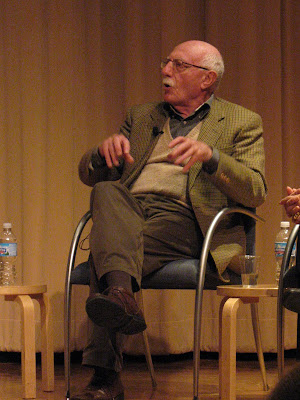Thursday, December 23, 2010
Monday, December 13, 2010
Energy Efficency For Minnesota Winter

The low was -15*F, but the little electric radiator heater kept the temp above 32*F in the enclosure. Exactly what I hoped it would do!


I got the nylon reinforced plastic from someone who set it out as garbage and MacKenzie gave me the "Farm" plastic. It was too heavy for covering pots but I told Warren I could use it in my studio.
Monday, December 6, 2010
Art At Ramsey. Thanks For Stopping By!
Thursday, November 18, 2010
Sunday, October 31, 2010
Sunday, October 24, 2010
Sunday, October 17, 2010
Thursday, September 30, 2010
7junipers.com » Tatsuzo Shimaoka, 1919-2007
I found an article about y Sensei at Seven Junipers .
Tatsuzo Shimaoka, 1919-2007: "
Japanese ceramics artist Tatsuzo Shimaoka was a proponent of utilitarian pieces, or mingei (a term derived from minshuteki kogei, “craft of the people”). He was designated a “living national treasure” by the Japanese government in 1996."
In an article in Clay Times (November 2001), Richard Busch reports Shimaoka’s recollections of his developing interest in mingei and the apprenticeship process.
One day, at the age of 19 and a freshman at the Tokyo Industrial College, he wandered into the Nihon Mingeikan (Japanese Folk Crafts Museum), which had been started by Soetsu Yanagi and several friends, including potters Kanjiro Kawai, and Shoji Hamada, and was struck by the simple, unpretentious pots and other historical items that had been made by anonymous craftspeople for everyday use. It was a turning point in his life.“Yanagi called these items the people’s craft or Mingei,” explains Shimaoka, “and he believed that they represent what is truly beautiful — not the highly refined work made by top artisans only for the wealthy few. He claimed that good craft must be convenient and comfortable to use because they are necessary every day. Mingei works must be durable, made in quantity, and affordable. Materials used must be natural and indigenous. At the basis of the Mingei philosophy lies the supposition that the craftsperson lives a healthy life, has a healthy mind, and is always sincere in the pursuit of utility.”The philosophy hit the young Shimaoka hard. “When I was lost at what to do in the future,” he recalls, “Yanagi’s theory was like fertile rain on barren soil. With my mind decided, I went to Mashiko to visit Hamada, an alumnus of my college, and he agreed to accept me as an apprentice after I graduated. He told me that the basis of ceramics is the wheel, and advised me to learn how to throw pots on the wheel while in school. I did as I was told.”After graduating from college, and following a stint in the Army during World War II (during which he spent time as a prisoner of war), he apprenticed with Hamada for three years. “In retrospect, those years studying under a great teacher were the basis for my career as a potter,” he says. “He would tell us apprentices to leave aside all that we had studied — as he had done when he left school — and to start with a new slate. Handmade work, he explained, is not to be learned by intellect, but with the body. Technique is not to be taught, but to ambitiously acquire.“This is the traditional way master artisans always treated their apprentices, and how apprentices gained good craftmanship. I now understand that that was the most effective method for acquiring potting techniques. Today I always have a few apprentices in my house, including students from abroad. I teach them just the way Hamada tought me.”
The image is the main page from one of the artist’s exhibitions at Galerie Besson in London’s West End.
See full article here: In Search of Ceramic Beauty (published in the Washington Times, 9/23/00) By Richard Busch
- Left: Pot, 2005, stoneware with rope-inlay pattern 22.7 cm (h) x 18 cm x 13.9 cm
- Right: Pot, 2005, stoneware with rope-inlay pattern, 26.4 (h) x 23.3 x 22.5 cm
Friday, July 16, 2010
Thursday, July 15, 2010
Mike Norman Vase, With Lilly.
Tuesday, July 13, 2010
Sunday, June 27, 2010
Tuesday, June 1, 2010
Monday, May 31, 2010
Saturday, May 29, 2010
Tuesday, May 25, 2010
Saturday, May 15, 2010
Wednesday, May 12, 2010
Subscribe to:
Comments (Atom)





























